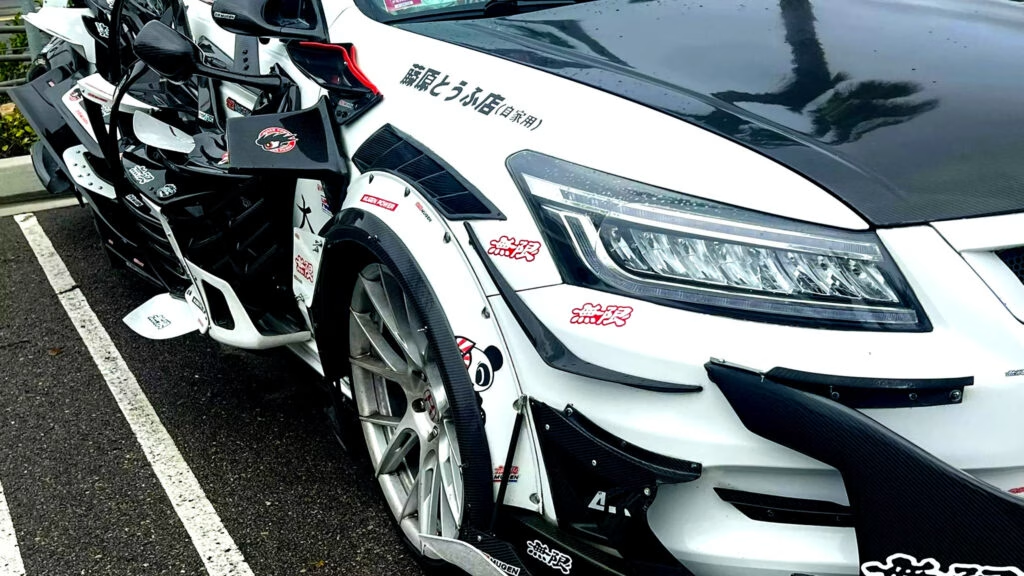What Drives Car Owners to Go Overboard with Aftermarket Mods?
Spotting a Honda Accord slathered in carbon fiber wings, fins, and vents is rare—unless you’re cruising through certain Arizona parking lots. One particular Accord has become a legend in online car circles, not for its performance, but for the sheer audacity of its modifications. The owner has transformed a sensible sedan into something that looks more at home in a sci-fi parody than on Main Street. But what motivates someone to keep piling on aftermarket parts, even when practicality flies out the window?
For many, car modification is about self-expression. It’s a rolling canvas, a way to stand out in a world of identical vehicles. According to a 2023 SEMA (Specialty Equipment Market Association) report, the US aftermarket industry topped $50 billion in annual sales, with personalization cited as the number one reason for upgrades. The Arizona Accord’s owner seems to have taken this ethos to heart—if one spoiler is good, a dozen must be better, right? There’s also a social aspect: extreme builds attract attention, spark conversations, and rack up likes on social media. Sometimes, the goal isn’t subtlety or speed—it’s pure spectacle.
How Far Is Too Far? The Fine Line Between Unique and Unusable
This Accord’s journey from mildly modified to “Transformer in mid-morph” raises a real question: when do mods stop adding value and start causing problems? There’s a point where function takes a back seat to form—if you can’t find the door handle because it’s buried under carbon fiber, you might be there. Aerodynamic add-ons like splitters, canards, and louvers are meant to improve handling and downforce, but only when carefully designed and installed. Slapping on dozens at random angles? That’s a recipe for increased drag and, ironically, worse performance.
Automotive engineer and YouTuber Jason Fenske (Engineering Explained) notes that poorly executed aero mods can actually destabilize a car at speed. Instead of hugging the road, you’re fighting turbulence and extra weight. In the case of this Accord, the only thing getting boosted is wind resistance—and maybe the owner’s rewards points at their favorite parts store.
Are There Any Real Benefits to Extreme Carbon Fiber Add-Ons?
Let’s be honest: carbon fiber is cool. It’s lightweight, strong, and has a high-tech look that’s catnip for car enthusiasts. Used strategically, it can shave pounds off a car and improve performance. But when you’re layering it over every inch—doors, windows, roof, quarter panels—the weight savings disappear. Worse, many aftermarket pieces are just for show, made from cheap composites that add bulk rather than subtract it.
A 2022 study by the Insurance Institute for Highway Safety (IIHS) found that non-OEM body parts can sometimes compromise crash safety, especially if they interfere with crumple zones or door operation. And if you can’t open your door in an emergency because it’s hidden under a wing, that’s a real concern. The lesson? Quality and placement matter more than sheer quantity.
What Do Real Enthusiasts Think of Builds Like This?
Within the car community, reactions to over-the-top builds are mixed. Some see them as harmless fun—a rolling meme that doesn’t take itself too seriously. Others cringe, seeing wasted potential and a disregard for the original engineering. On forums and social media, you’ll find both admiration for the owner’s dedication and gentle ribbing about the car’s resemblance to a parts catalog exploded in the driveway.
But there’s a silver lining: builds like this spark debate about what car culture should be. Is it about chasing lap times and perfecting form, or about pushing boundaries and having a laugh? For every critic, there’s someone who appreciates the creativity and the guts it takes to drive something so outrageous in public.
If You’re Tempted to Mod Your Own Ride, Where Should You Start?
Thinking about adding a little flair to your own car? Here’s what seasoned modders recommend: start with a clear vision. Ask yourself what you want—better performance, unique looks, or both? Do your research. Stick with reputable brands and parts that actually fit your car. Less can be more; a few well-chosen upgrades will stand out more than a jumble of mismatched pieces.
And don’t forget about safety and legality. Some mods can run afoul of local laws or void your insurance. If you’re unsure, consult with a professional or join an online community for advice. The best builds balance personality, function, and a healthy dose of common sense.
Why This Wild Honda Accord Matters More Than You Think
At first glance, the Arizona Accord might seem like a punchline—a cautionary tale about going too far. But it’s also a reminder of what makes car culture so vibrant: passion, creativity, and a willingness to stand out. Sure, not everyone will want to follow in these tire tracks. But the freedom to experiment, to make mistakes, and to laugh at yourself is what keeps the scene alive.
The big takeaway? Personalizing your car isn’t about perfection—it’s about smarter adjustments. Start with one change this week, and you’ll likely spot the difference by month’s end.

